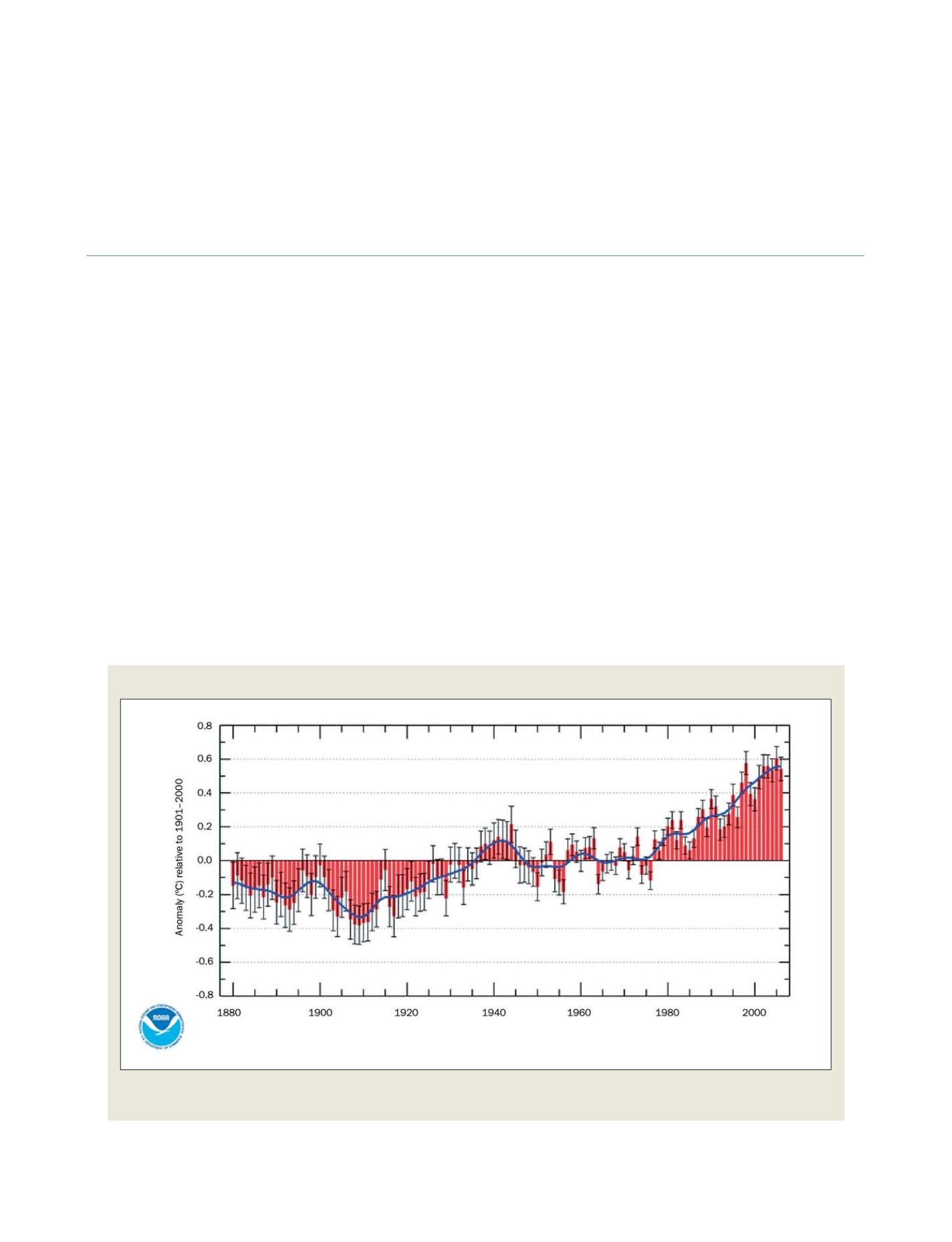

[
] 204
State of the climate – using
Earth observations to monitor the global climate
Jay Lawrimore, NOAA National Climatic Data Center
O
bserved changes in the Earth’s climate have been well
documented in numerous national and international
studies. Eleven of the past twelve years (1995–2006)
were among the 12 warmest years in the instrumental record.
Also, in comparison with paleoclimatic data, the average
Northern Hemisphere temperatures during the second half of
the 20th century were likely higher than any other 50-year period
in at least the past 1,300 years.
1
Global temperatures continued to warm at the start of the 21st
century. The strong El Niño of 1997–1998 helped push the global
temperature to a record high, and only seven years later, in 2005,
the global average annual temperature exceeded that record even
without the warming influence of a strong El Niño episode.
2
Other
observed changes of the past century include an increase in heavy
and extreme precipitation events in many parts of the
world, rising sea levels, reductions in Arctic sea ice,
melting permafrost, and an increasing incidence of
drought. Projections indicate that these and other trends
are likely to continue well into the future, and in some
cases, changes are projected to occur at faster rates in
the 21st century.
3
Climate change may actually provide benefits to
some areas of the world in the near term. For example,
higher crop yields in mid and high latitudes, reduced
cold season energy demand, and more navigable
northern sea routes. However, negative impacts are
expected to outweigh positive ones, particularly as the
rise in temperature reaches the higher end of projec-
tions.
January–December global mean temperature over land and ocean
The global surface temperature has risen at a rate greater than 0.6°C/Century since 1900
and the rate of increase has been almost three times higher since the mid-1970s
Source: NCDC/NESDIS/NOAA
S
OCIETAL
B
ENEFIT
A
REAS
– C
LIMATE
















